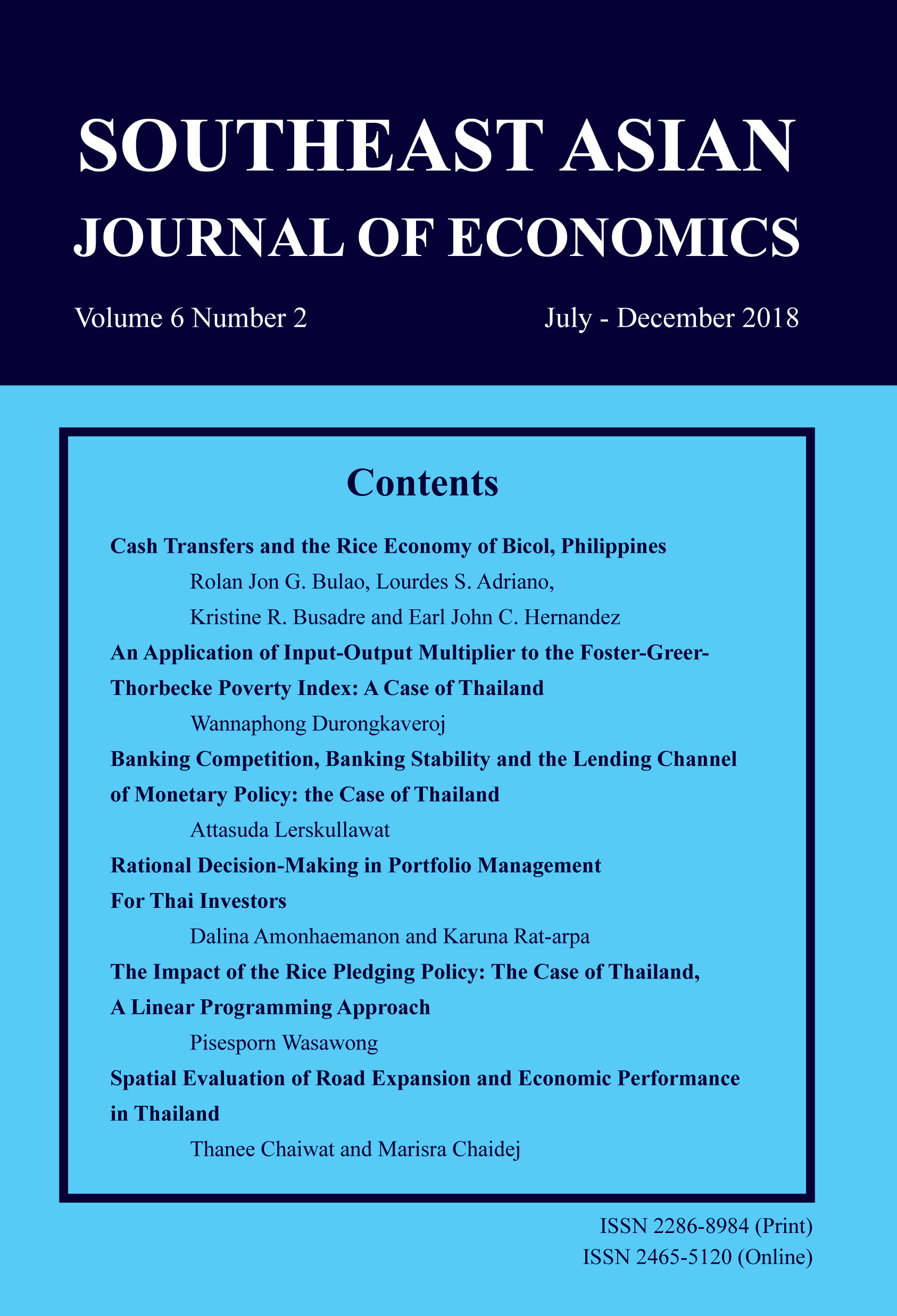The Drivers of Household Indebtedness: Evidence from Thailand
Keywords:
Household Indebtedness, Subjective Over-indebtedness, Objective Over-indebtednessAbstract
This paper explores the nature of and the dangers posed by household indebtedness in Thailand. It utilises three levels of models to characterise savings and consumption behavior—first, the neoclassical models of the Life-Cycle Hypothesis and the Permanent Income Hypothesis; second, the asymmetric information models of credit rationing; and, finally, the behavioral finance models, which suggest that at least some consumers will act in non-rational ways. We find that the neoclassical models are supported by the evidence from Thailand. Secured income and sufficient saving allow households to improve their debt performance and reduce their chances of being over-indebted; whereas a higher level of dependency on finance can lead to a higher probability of being over-indebted. We also find that, for some borrowers, credit constraints are binding in the formal market for loans, which leads those borrowers to enter the gray market. Finally, we find that higher financial literacy is also correlated with superior debt performance. This raises issues about improving the level of financial literacy for Thai households.
Downloads
Published
How to Cite
Issue
Section
License
The submission of a manuscript implies that the paper is an original work and has not been published elsewhere. The author(s) authorize the journal to reproduce or distribute the paper in printed or other electronic forms.







